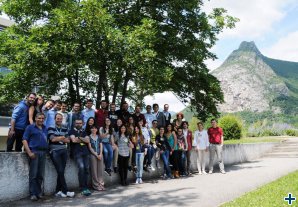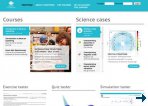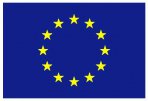26 students attended the Italian Learning Days School
The Italian Society of Neutron Spectroscopy organised the Giornate Didattiche School on June 12-20, 2016. Students were given an introduction to neutron techniques for condensed matter studies, with applications to Physics, Chemistry, Biology and Earth sciences.
Andrea Piovano and Eleonora Guarini, 27/09/2016
When: 12-20 June 2016
Where: San Giovanni in Valle Aurina (Bz, Italy) and Grenoble (France)
Website: http://www.sisn.it/formazione/giornate-didattiche-2016/
Program: Click here (PDF)
The 13th edition of the Learning Days has taken place on June 12-20, 2016. It provided an introduction to neutron techniques for condensed matter studies, with applications to Physics, Chemistry, Biology and Earth sciences. The school is organized by the Italian Society of Neutron Spectroscopy. It addressed degree and specializing students, PhD students, post-doc and young researchers interested in acquiring the basic principles of neutron spectroscopy, in understanding the advantages and potentialities of this technique, and in exploiting it for their research.
Participants and the program
This year 26 students from three different nationalities have been selected among all the applications received. Selection has been made on the basis of the motivation letter the students had to provide to the directors of the school.
The school had two sessions. The first theoretical session provided the students with the fundamentals of neutron spectroscopy and the basic principles of data analysis, followed by exercises and tutorials. It was held in S. Giovanni Valle Aurina in the province of Bolzano, Italy.
The second experimental session was an opportunity for students to take part in real neutron scattering measurements for two full days at the neutron facility Institute Laue-Langevin (ILL) in Grenoble, France. Depending on the tutors' nationality the language spoken during the experiments was Italian or English. This year the instrument used for the training were:
- BRISP: a Brillouin scattering spectrometer (inelastic low momentum scattering)
- IN13: a thermal neutron backscattering spectrometer
- D16: a small momentum transfer diffractometer
- D4: Disordered Materials Diffractometer
The students had time to understand the instruments, analyse the collected data, and prepare a report to present on the last day. To reward the best presentation, a committee composed by the school directors and experimental tutors offered a prize: a neutron scattering book. In the evening the school ended with a social dinner in the Grenoble city centre.
Valuable lectures and support
The theoretical lessons have been presented by 13 professors and researchers with a high reputation in the field of neutron scattering, and the experimental session in Grenoble has been driven by four tutors and the users of the different experiments. The language used was Italian for the technical part (presented by tutors) and English or Italian for the scientific part (presented by users).
With support from SINE2020, the school has organized and funded:
- The staying in Val Aurina (with a small contribution from students): accommodation, meals, coffee-breaks, didactic material, pen drives
- The travel from Val Aurina to Grenoble by bus
- The staying in Grenoble: accommodation, meals, social dinner, prize
The future
Given the success of the school (very good comments from the students), we will repeat it next year in a similar format. Most probably GD2017 will be held in September to match with the ILL reactor operation plans.
The Learning Days school received SINE2020 support. For further information about our Training programme, please click here .
Related News
Apply to the Berlin School on Neutron Scattering by October 15
Learn neutron scattering on 2 – 10 March 2017 at the Helmholtz Zentrum Berlin. SINE2020 supports travel costs. Read more.
The neutron scattering e-learning platform is online for free
Neutron scattering textbook, exercises, and simulations of experiments are now available online and for free at e-neutrons.org. Read more.








